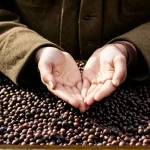Essential Ingredients and Tools for Authentic Fish and Chips
Choosing the right fish and chips ingredients is crucial for an authentic dish. Traditionally, the best fish for fish and chips are white, flaky varieties such as cod, haddock, or pollock. These fish types offer a delicate texture and mild flavor that work perfectly with a crunchy batter. Frozen fillets can be used, but fresh fish ensures superior taste and quality.
Equally important are the potatoes. Opt for starchy, firm varieties like Maris Piper or Russet for the best chip preparation. Their high starch content creates a fluffy interior once fried.
Have you seen this : What are the essential steps for making a traditional Eton mess?
Regarding equipment for frying, a heavy-bottomed deep fryer or a large, deep pan is essential to maintain consistent oil temperature. Thermometers help monitor frying temperature accurately, preventing oily or undercooked results. Additionally, a wire rack or draining tray allows excess oil to drip off, keeping the fish and chips crisp. A slotted spoon or frying basket facilitates easy handling during frying.
Combining these quality ingredients with the right equipment sets the foundation for a truly authentic fish and chips experience, balancing texture, flavor, and visual appeal.
Have you seen this : How can you make a comforting shepherd’s pie from scratch?
Preparation Steps for Fish and Chips
Proper fish and chips preparation starts with the right handling of both the fish and the potatoes. For the fish, begin by patting dry the fillets to ensure the batter adheres well. If using fresh fish, remove any excess moisture to avoid soggy batter. Cutting the fish into uniform pieces helps them cook evenly, which is essential for that flaky texture.
When it comes to chip preparation, slice the potatoes evenly, about 1cm thick, to balance a crispy exterior with a fluffy interior. After cutting, soak the chips in cold water for at least 30 minutes. This step removes excess starch, preventing chips from sticking together and promoting a crisper finish.
Prepping the batter is equally vital. Mixing the batter just before frying keeps it light and bubbly, resulting in a crispy fish coating. Maintain a chilled batter temperature to slow gluten formation, which also enhances crispiness.
By focusing on these preparation steps, from drying the fish fillets to soaking the potatoes and perfecting the batter, you set the stage for authentic, restaurant-quality fish and chips every time.
Mastering the Fish Batter and Breading Process
Achieving a crispy fish batter requires precise mixing and proper technique. The classic batter recipe combines plain flour with cold sparkling water to introduce lightness. Adding a pinch of baking powder or cornflour boosts crispness by reducing gluten formation. Seasoning the batter with salt and optional white pepper enhances the mild flavor of the fish without overpowering it.
To ensure the batter sticks well, dry the fish fillets thoroughly before dipping. Some chefs lightly dust the fish in flour first; this step creates a dry surface for the batter to cling to, preventing it from sliding off during frying. The fish breading technique benefits from a smooth and even coating, applied quickly to avoid the batter thickening.
A well-executed batter results in a thin, golden crust with delicate crunch while allowing the fish inside to remain juicy and flaky. Maintaining the batter cold by placing its bowl over ice just before frying preserves the bubbles, which are key to that perfect crunch. Mastering these techniques will elevate your fish and chips to restaurant quality, impressing with texture and flavor balance.





